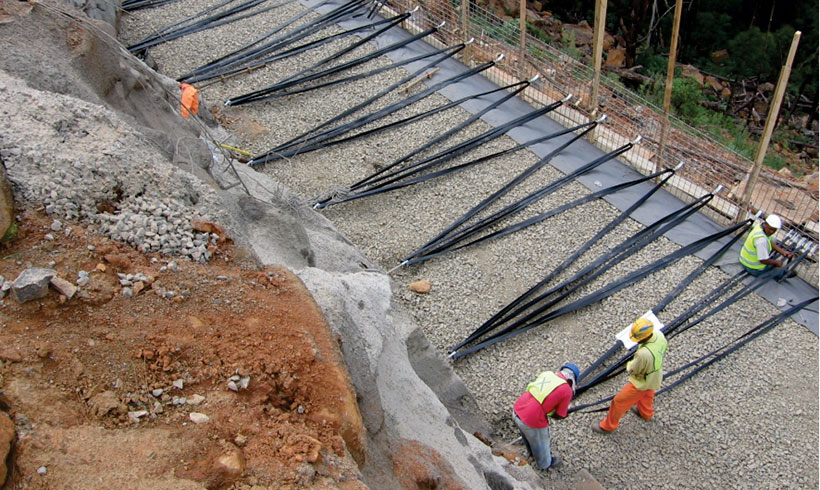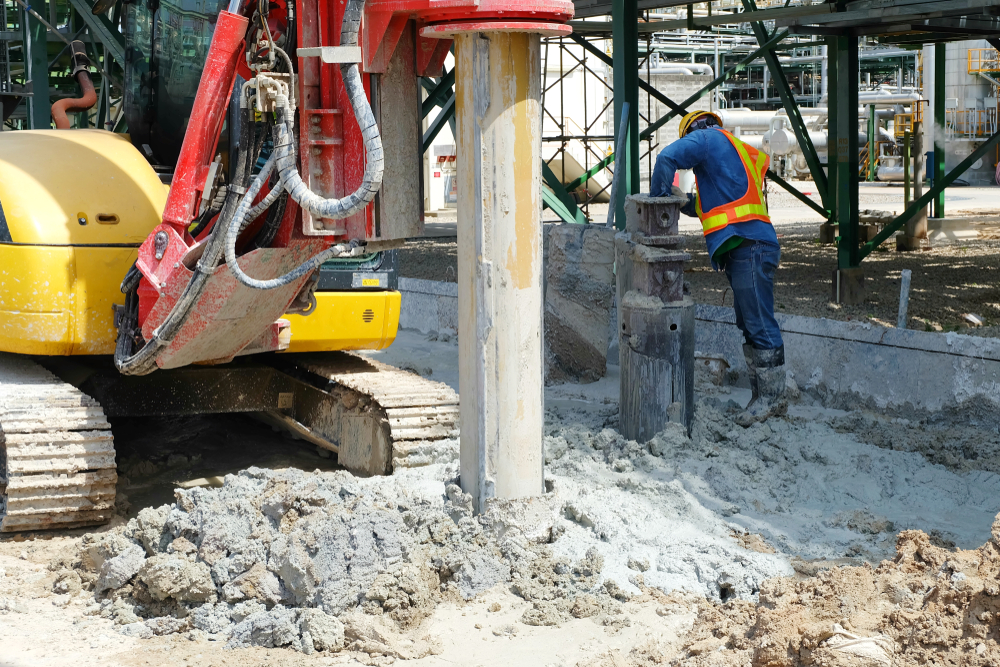Geotechnical Engineering For Construction Projects Things To Know Before You Buy
Geotechnical Engineering For Construction Projects Things To Know Before You Buy
Blog Article
More About Geotechnical Engineering For Construction Projects
Table of ContentsWhat Does Geotechnical Engineering For Construction Projects Mean?The Definitive Guide for Geotechnical Engineering For Construction Projects10 Simple Techniques For Geotechnical Engineering For Construction ProjectsThe 15-Second Trick For Geotechnical Engineering For Construction ProjectsGeotechnical Engineering For Construction Projects for BeginnersThe 9-Minute Rule for Geotechnical Engineering For Construction ProjectsGeotechnical Engineering For Construction Projects Fundamentals Explained
Principles and Method of Ground Improvement. Ground Improvement Principles And Applications In Asia. Style analysis in rock mechanics.Cengage Knowing, Stamford, 666 p. Atkinson, J., 2007. The technicians of dirts and foundations. Taylor & Francis, N.Y., 442 p. Drifting Offshore Wind Generators: Actions in a Sea state Pareto Ideal Styles and Financial Analysis, P. Sclavounos et al., October 2007. Nicholson, D, Tse, C and Penny, C. (1999 ). The Observational Method in ground engineering principles and applications.
The 5-Minute Rule for Geotechnical Engineering For Construction Projects
Laboratory and area testing plays a crucial function in this procedure. By extracting samples from the planet's subsurface and applying a suite of tests, geotechnical engineers can predict the behavior of dirt layers and evaluate their suitability for different construction endeavours. The essence of geotechnical design in civil design can not be overemphasized, attributable to a number of elements: The first step in any kind of geotechnical study entails establishing the soil kind at the construction website.
Recognizing these qualities makes certain that only ideal soil types are picked for the advancement, therefore averting potential architectural failures. The foundation works as the bedrock of any kind of building and construction project. Selecting the ideal structure type is a choice that rests on the extensive evaluation provided by geotechnical engineering. This makes certain the longevity and stability of frameworks by suiting the loads they will certainly birth.

Geotechnical website examination is an essential action in the preparation and execution of any building job. It includes the collection and analysis of information connected to the physical residential or commercial properties of soil and rock below a proposed building site. This information is important for the style and building of safe, steady, and sustainable structures.
6 Easy Facts About Geotechnical Engineering For Construction Projects Shown
, likewise understood as subsurface exploration, includes a collection of activities intended at determining the dirt, rock, and groundwater problems at a construction site. The key purposes are to determine possible geotechnical risks, evaluate the design properties of subsurface materials, and give recommendations for the style and building and construction of structures, retaining walls, and other structures.
This might consist of geological maps, airborne pictures, previous examination records, and historic data. The desk study assists in identifying prospective geotechnical problems and preparing the succeeding fieldwork. Complying with the workdesk research study, a website reconnaissance is carried out to aesthetically evaluate the website and its surroundings. This includes observing the topography, water drainage patterns, existing frameworks, greenery, and any type of indications of instability or erosion.
3 Simple Techniques For Geotechnical Engineering For Construction Projects
Superficial test pits are dug deep into to straight observe and sample the soil and rock. This method works for studying the upper layers of the subsurface and recognizing near-surface threats. Non-invasive geophysical techniques, such as seismic refraction, ground-penetrating radar (GPR), and electrical resistivity tomography (ERT), are made use of to map subsurface conditions and detect anomalies.
Soil and rock examples collected throughout the area investigation undergo laboratory screening to establish their physical and mechanical properties. Typical laboratory examinations include grain size evaluation, Atterberg limitations, compaction examinations, triaxial shear tests, and combination examinations. These tests offer vital data for geotechnical evaluation and style. The information gathered from the workdesk research, website reconnaissance, field investigation, and laboratory screening are analyzed and translated to develop a thorough understanding of the subsurface problems.
The main advantage of geotechnical website examination is making sure the safety and security and stability of structures. By comprehending the subsurface problems, designers can design foundations and other architectural components that can endure the lots and environmental forces they will certainly undergo. This reduces the web threat of settlement, subsidence, and architectural failing.
What Does Geotechnical Engineering For Construction Projects Do?
For example, comprehending dirt features can guide the selection of excavation strategies, dewatering check over here approaches, and ground renovation actions. This makes certain effective and safe construction methods. Geotechnical site examinations are commonly required by constructing codes and policies. Complying with these demands guarantees conformity with legal and safety and security criteria, avoiding possible lawful responsibilities and project hold-ups.
This info is invaluable for task managers, designers, and contractors in establishing realistic timetables, budgets, and contingency strategies. Geotechnical Engineering for Construction Projects. Skyscraper in a Coastal AreaIn a seaside city, a high-rise property structure was intended on a site with believed loose sand deposits and a high water table. An in-depth geotechnical examination, including borehole drilling, CPT, and geophysical surveys, was carried out
The Basic Principles Of Geotechnical Engineering For Construction Projects
Based on these findings, the structure layout was changed to consist of deep pile foundations prolonging into stable strata, and ground improvement techniques, such as vibro-compaction, were implemented to mitigate liquefaction threats. This proactive approach ensured the safety and security and security of the structure while preventing costly post-construction removal. Facilities Advancement on a Sloping TerrainA major facilities job, including the building of a freeway and bridges, was intended on an uneven terrain with high slopes.

The Leaning Tower of Pisa (Italy), a renowned architectural wonder, is infamous for its unintentional tilt from significant geotechnical concerns. The tower's foundation was improperly created to deal with the soft, unpredictable soil below it, leading to irregular settlement and its distinctive lean. Our globe is dotted with remarkable framework projectsfrom towering high-rises to sprawling bridgesall standing testimony to the development of the various building and construction tools and techniques available.
Geotechnical engineering is a customized area within civil engineering that concentrates on studying the habits of earth products. This branch delves deep right into the groundinvestigating exactly how the dirt, rock, and groundwater at a building site can influenceand be affected bythe infrastructure that we set up on and right into them. Before a solitary block is laid or a concrete foundation put, geotechnical engineers probe into the earthgathering essential information concerning the site's dirt structure, rock framework, and groundwater levels.
The 9-Minute Rule for Geotechnical Engineering For Construction Projects

is a tool utilized to analyze the honesty and load-bearing capacity of stacks throughout installment, leveraging the principle of wave proliferation. It maximizes construction performance by supplying real-time assessments, thus guaranteeing safe and reliable pile foundations. Among the sensible applications of geotechnical design entails deciding and performing the ideal approaches for structure construction.
Pile driving represents more than the plain act of putting structural aspects right into the ground. However, it is a carefully orchestrated procedure of moving a framework's lots past the much less stable dirt layers more detailed to the surfacedown to the extra substantial strata that lie beneath. In the case of pile driving, think about how geotechnical engineers skillfully use this method to uniformly distribute the structure's weight.
Report this page